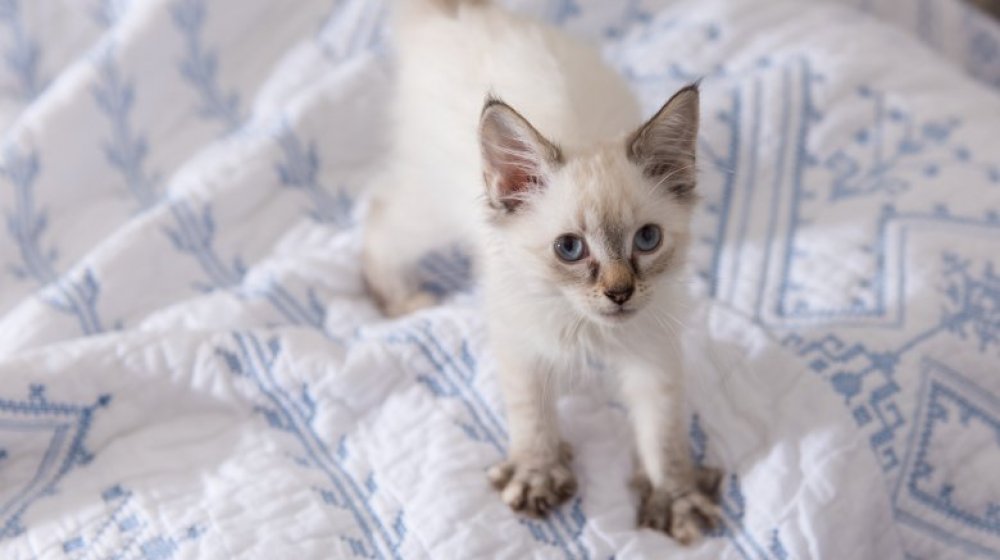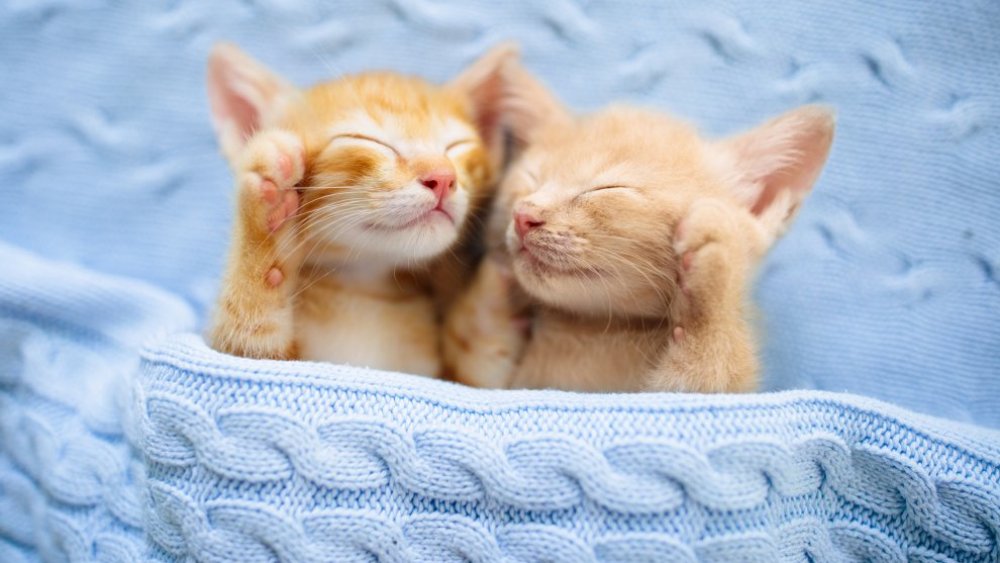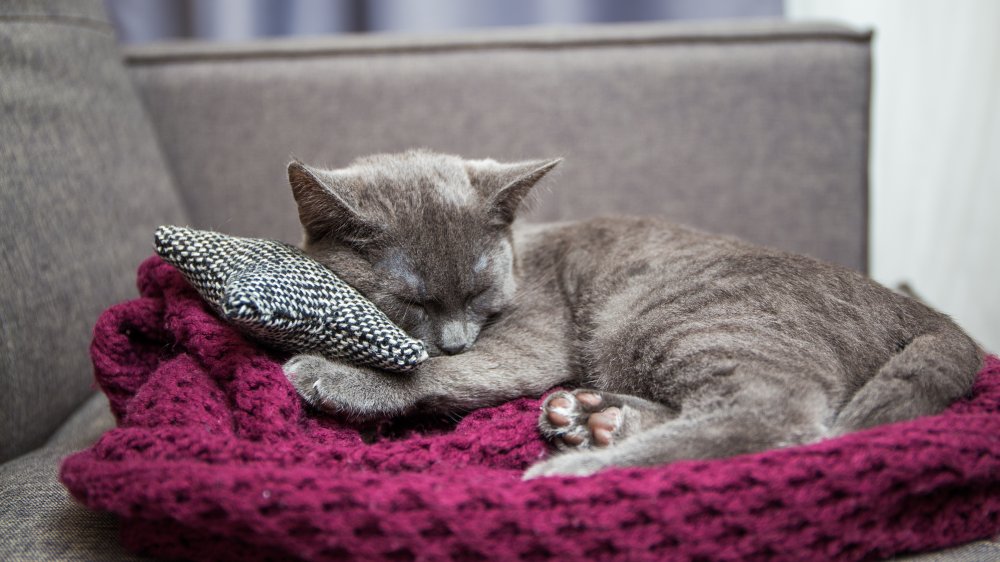Why Do Cats Knead?
Cats love to make biscuits. It's not so great for us humans, what with all the fur and bits of kitty litter in the biscuit dough, but hey, they're still going to taste better than KFC biscuits.
Okay that's not really what we mean when we say our cat is "making biscuits" or kneading, but it sure does seem sometimes like our feline friends are dreaming of a career as a television chef. And it's kind of a baffling behavior, too, because what could they possibly be trying to accomplish?
In case you don't happen to be a cat person and have no idea what we're talking about, "kneading" or "making biscuits" is when a cat steps on something soft, like a blanket, a pillow, or your lap, and then alternately pushes on the soft surface with each foot (sometimes with, sometimes without claws). There's no doubt that the action is positive — cats often purr when they knead, and some owners describe a kneading cat as almost blissfully trancelike.
Cats might knead up to bed down
According to LiveScience, no one is really sure why cats knead, but there are plenty of people with ideas. One favorite theory is that cats do this because it's something they did when they're kittens — kneading on mom (officially known as "milk treading") makes the milk flow faster. When cats become adults, they will continue to perform this behavior because it gives them comfort. And who doesn't need to feel comforted after a long day of sleeping, yawning, stretching, moving to a new sunbeam, and then sleeping some more?
Some people think cats that knead may have been taken from their mothers too soon, but most experts don't agree with that theory for the simple reason that all cats seem to enjoy kneading. You could argue that that's evidence of an epidemic of kittens who are weaned too young, but kneading is really too universal to be anything other than the normal behavior of a normal cat. If you need further proof, housecats aren't the only type of feline that continues the kneading behavior past kittenhood. Big cats like lions do it too, so it does seem to be a behavior that's programmed into cats both big and small. Let's just hope most big cats prefer to do their kneading on patches of dry grass rather than human laps, because otherwise ouch.
That's not the only theory, though. PetMD notes some people think that cats do this in order to compact their sleeping area. That's not so important now that they're domesticated and have beds made out of soft fabric, but it was probably pretty useful during a time when most beds were just a pile of grass or weeds out in the woods somewhere.
Cats also have scent glands in their paws, so kneading could just be a way of marking territory. That doesn't explain why cats almost universally seem to prefer kneading on soft surfaces, though. If they were marking territory surely they'd also knead on their litter boxes, the kitchen table, and your ankles because everyone knows cats have the exclusive property rights to all of the above things.
If you don't like kneading, you can discourage it (but don't punish it)
Some humans love the kneading behavior — it's sweet and affectionate, and maybe slightly painful but you know, sweet and affectionate. Still, you may not actually enjoy the rhythmic sensation of claws in flesh, so Mother Nature Network has a few suggestions for discouraging kneading if you feel you really must. First, you could just gently nudge your cat until into a lying down position and just bypass the whole kneading part of the ritual altogether. Or, you could distract your cat with something to eat or play with, though that seems like it'd just be opening you up to new claw-related hazards.
Alternately, you can just try to keep your cat's claws trimmed or keep a towel or other claw-shield next to wherever you usually happen to be sitting when Kitty decides to turn your lap into a slab of biscuit dough. Or if you want Kitty to stay off your lap when kneading, you can keep a cat bed or something else that's soft and enticing nearby, and then just redirect your cat to that spot every time he or she feels the need (the need to knead). Whatever you do, don't punish your cat for kneading — kneading is a natural behavior, and animals should never be punished for engaging in behaviors that come naturally to them.
We may not know with 100 percent certainty the reasons for our cats' sweet kneading behavior, but we do know one thing we do know for sure — they're not doing it as practice so they can land a spot on Chopped. Most of them, anyway.


